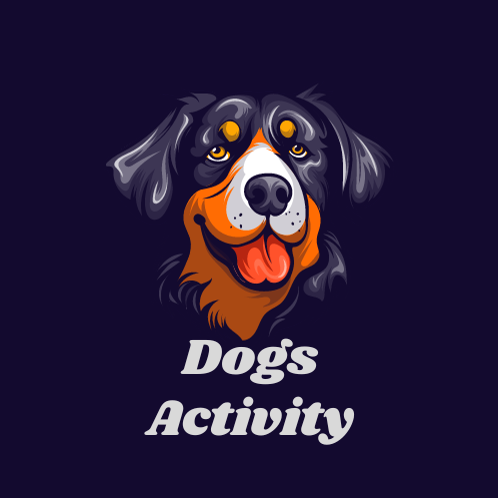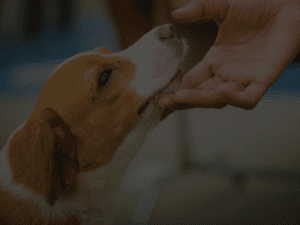
Introduction
Dogs, our loyal companions, never cease to amaze us with their intriguing behaviors. One such captivating sight is witnessing our furry friends wag their tails even in their slumber. The enigmatic phenomenon of a dog wagging its tail in sleep has fascinated pet owners and researchers alike. This article delves into the science and psychology behind this behavior, uncovering the possible reasons and meanings behind a dog’s tail wagging during sleep.
The Intriguing Behavior of Dogs’ Tail Wagging in Sleep
Observing a dog sleeping peacefully, its tail swaying rhythmically, can be both adorable and puzzling. It’s important to understand that a dog’s tail wagging during sleep is a natural behavior, but decoding its significance requires a closer look at canine behavior and physiology.
Canine Body Language: Tail Wagging as a Communication Tool
Dogs use their tails as a means of communication, expressing a wide range of emotions and intentions. When awake, a dog’s tail wagging can convey happiness, excitement, nervousness, or even anxiety. It serves as a crucial aspect of their body language, helping them communicate with humans and other animals.
During sleep, a dog’s brain is still active, processing experiences and emotions. It’s believed that the tail movements during sleep might be a continuation of the communication that occurs when they’re awake. Dogs dream just like humans, and these dreams may evoke various emotions, leading to subtle physical reactions like tail wagging.
REM Sleep and Canine Dreams
Research has shown that dogs experience rapid eye movement (REM) sleep, the phase associated with dreaming, much like humans. During REM sleep, a dog’s brain activity mirrors wakefulness, and it’s plausible that they dream about familiar activities, interactions, or scenarios.
Tail wagging in sleep could be a reflection of these dream-induced experiences. Dogs may reenact actions from their wakeful hours, including tail wagging, as a response to the emotions and situations they encounter in their dreams.
Understanding the Emotional Context
The emotional context of a dog’s dream might influence tail wagging during sleep. Dogs have rich emotional lives, and their dreams could trigger responses associated with joy, anticipation, playfulness, or even stress. Tail wagging might signify positive dream experiences, such as chasing a ball or receiving affection, or it could manifest as a response to fear or uncertainty in their dreams.
Physical Reflexes or Muscular Twitching
Another perspective to consider is that tail wagging during sleep might not always be directly linked to dreams or emotions. Just like humans experience muscle twitches or movements during sleep, dogs might exhibit involuntary muscular activity that causes their tails to wag intermittently.
It’s plausible that these movements are simply physiological responses, similar to how dogs’ legs may twitch while they’re dreaming of running. In such cases, the wagging may not carry any specific emotional or psychological meaning but could be attributed to reflexive muscle contractions.
Understanding Dog Tail Wagging in Sleep:
Dogs display a variety of behaviors during sleep, and tail wagging is one of them. Tail wagging during sleep is commonly observed and can occur for several reasons:
- Dreaming: Dogs, like humans, experience different sleep stages, including rapid eye movement (REM) sleep. During this stage, dogs may exhibit behaviors similar to what they do when awake, including tail wagging. It’s believed that dogs may be dreaming about pleasant experiences, such as playing, interacting with their owners, or exploring, leading to tail movements while asleep.
- Muscle Twitches: Dogs can experience muscle twitches or movements during sleep. Tail wagging might occur as a result of these involuntary muscle contractions, similar to how humans may twitch or move limbs while sleeping.
- Emotional Expression: Tail wagging is often associated with various emotions in awake dogs, such as happiness, excitement, or friendliness. While asleep, dogs might still react to dream scenarios or stimuli in their dreams that evoke positive emotions, causing their tails to wag involuntarily.
- Physical Comfort: Tail movements during sleep might also be related to physical comfort. Dogs might adjust their positions during sleep, and tail movements could be part of this natural adjustment process.
Significance and Considerations:
- Physical Health: Occasional tail wagging during sleep is typically normal and harmless. However, if a dog frequently exhibits intense or constant tail movements during sleep, it might be worth observing for any signs of discomfort or pain upon waking. Persistent or excessive tail wagging during sleep could potentially indicate discomfort or a health issue, and consulting a veterinarian may be advisable in such cases.
- Dream States: Just like humans, dogs can have different dream states during sleep. Observing tail wagging in sleep can be an indicator that dogs experience similar emotional states in their dreams as they do when awake. It’s a fascinating insight into their mental and emotional world.
- Individual Variation: Dogs’ behaviors during sleep, including tail wagging, can vary widely among individuals. Some dogs might frequently wag their tails during sleep, while others might do so rarely or not at all. It’s essential to consider individual differences and personality traits of dogs when interpreting their behaviors during sleep.
The Intricacies of Canine Behavior in Sleep
Emotional Correlation to Tail Wagging
Emotional Dreaming in Dogs: Research has indicated that dogs exhibit complex emotional experiences during dreams, similar to humans. These dreams often encompass activities and interactions from their daily lives, leading to emotional responses. Tail wagging in sleep might be an expression of these emotional experiences, portraying joy, contentment, or even stress.
Dream-Induced Memories: Dogs often dream about familiar activities, places, or individuals they encounter in their waking hours. When a dog’s brain processes these memories during sleep, their physical responses might manifest as tail wagging. For instance, a dream about playtime with their favorite toy might result in tail movements during sleep, reflecting their joyous state.
Interpretation of Tail Wagging Variations
Tail Positions and Movements: The position and movement of a dog’s tail can signify different emotions. A higher tail position often indicates confidence or alertness, while a lower or tucked tail might suggest fear or anxiety. Similarly, the speed and direction of wagging convey various emotions. During sleep, these subtle variations in tail wagging might also reflect the emotional content of a dog’s dreams.
Contextual Analysis: Understanding a dog’s overall body language while sleeping, along with tail wagging, can provide clues about their dream state. Observing other physical cues, such as facial expressions, ear movements, or vocalizations during sleep, could contribute to interpreting the emotional context behind tail wagging.
Scientific Understanding of Canine Sleep Patterns
REM Sleep and Dreaming: Dogs undergo different stages of sleep, including REM (Rapid Eye Movement) sleep, during which vivid dreaming occurs. REM sleep is characterized by increased brain activity resembling wakefulness, and it’s during this phase that dogs likely experience dreams. The connection between REM sleep and tail wagging might offer insights into the emotional experiences occurring in a dog’s dreams.
Muscle Memory and Reflexes: Tail wagging during sleep might not exclusively indicate emotional responses; it could also be attributed to muscle memory and reflexes. Dogs may involuntarily reenact movements they often perform while awake due to muscle twitching or memory consolidation during sleep. This suggests that some instances of tail wagging may lack specific emotional connections but rather stem from physiological processes.
The Bond Between Dogs and Humans
Interpreting Canine Behavior: A dog’s behavior, including tail wagging during sleep, serves as a means for humans to understand and connect with their pets on a deeper level. Interpreting these behaviors allows pet owners to better comprehend their dog’s emotional experiences and cater to their needs accordingly.
Promoting Well-being: Understanding a dog’s emotional life, even during sleep, emphasizes the importance of providing a nurturing and stress-free environment for their overall well-being. By recognizing their emotions, pet owners can create a supportive atmosphere that promotes a sense of security and happiness for their furry companions.
While the behavior of a dog wagging its tail during sleep remains a captivating and somewhat mysterious phenomenon, exploring the possible reasons behind this behavior provides valuable insights into the emotional lives of our beloved canine friends. Understanding these subtle cues not only strengthens the bond between humans and dogs but also fosters a deeper appreciation for the complexity of canine behavior, both awake and asleep.
Conclusion:
Dog tail wagging during sleep is a fascinating behavior that can be attributed to various reasons, including dreaming, muscle twitching, emotional expression, and physical comfort. In most cases, occasional tail wagging during sleep is perfectly normal and reflects a dog’s dream state or physical adjustments.
However, if the tail wagging during sleep appears excessive, seems to cause discomfort upon waking, or is accompanied by other concerning behaviors or symptoms, consulting a veterinarian for a thorough examination is recommended to rule out any underlying health issues.
Understanding and observing our canine companions’ behaviors during sleep can provide valuable insights into their emotional experiences and overall well-being, enhancing our understanding and connection with them as loving pet owners.



